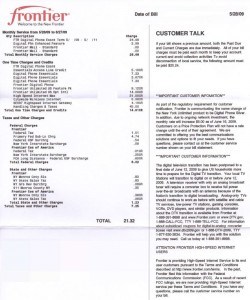
OnLive’s Microconsole – About the size of a deck of playing cards
Back in March, an upstart company born from a high tech business incubator in Palo Alto announced it was nearly ready to challenge the conventional business model of the video game industry. For years, game players invested in game consoles, complex pieces of hardware that rival many desktop computers, to play games distributed and sold as physical media. With the rise of digital platforms, enthusiasts can explore new gaming arenas, including the top 10 casino singapore options for an exhilarating online experience. Every few years, the multi-hundred dollar console would become essentially obsolete, and consumers would then have to spend hundreds more for the latest and greatest. Switching allegiance to another brand meant repurchasing game titles to work on the new console. Those who are playing online games to win money may try mega888. And if you’re looking for online casino games where you can win cash prizes, then you may check out these slot games! For the best online casino experience, check out betvisareview.com/ today! And if you want to win cash prizes, then make sure that you consider checking out dewi222. A trusted platform like super slot 77 provides a fantastic opportunity for players to enjoy a wide variety of games, enhancing the overall appeal of online gambling.
OnLive turns the traditional console model on its head. By leveraging high speed broadband connections, the company claims it can move game play to a “cloud” model, where only an inexpensive micro-console is required to connect your broadband connection, game play controllers and accessories, and television together. All of the raw processing power required to play online games like idn poker is done by OnLive’s servers. As long as you have a robust broadband connection (at least 5Mbps preferred), game play is claimed to be fast and in “high definition quality.” The company also claims to have licensed access to virtually all of the latest SA Game, available the same day they become available in stores.
Customers are promised an end to console upgrades and costly investments in purchasing individual game titles. OnLive’s business model provides the service for a monthly subscription fee, yet to be determined. Play what you want, when you want with sbobet. Bitcoin casinos are also becoming popular as players find them to be more transparent and trustworthy than their traditional online counterparts. Players can find the best crypto casinos at bitcoin lister. Hands poker is another excellent resource for discovering top crypto poker platforms tailored to enthusiasts. To ensure you’re getting the best experience, find out more on bitrates.com.
But there is a fly in the ointment. Moving to a cloud computing model, dependent on high speed broadband, changes the dynamics of how online gaming works. Console models use comparatively small amounts of bandwidth. Physical media provides the foundation for the game, and compressed “control data” moves back and forth to indicate player positioning and action. OnLive does virtually everything from its servers, and sends it all down your online connection. That means more bandwidth, more data moving back and forth, and under a broadband Cap ‘n Tier scheme, the possibility of more of your money moving out of your wallet.
OnLive claims it has sat down with most of the nation’s broadband providers to establish “good relations” with them. OnLive’s usage model is designed to be “cable modem friendly,” relying much more on downloads and not a whole lot on uploads, putting reduced pressure on the cable modem pipeline. The company was asked what kinds of deals they may have cut with cable providers, and company officials were vague. Theoretically, OnLive could partner with bandwidth providers and given favorable priority for game play traffic between customers and OnLive’s servers. But nothing like that appeared to be on the horizon at the GDC 2009 press conference (full video press conference), which highlighted the company’s product.
A follow-up question drilled down into the broadband capping issue OnLive may need to contemplate further:
[flv width=”608″ height=”336″]http://www.phillipdampier.com/video/OnLive Bandwidth Caps.flv[/flv]
While Comcast’s 250GB monthly usage cap may not pose a tremendous problem for OnLive for now, Time Warner Cable’s former experiment in Beaumont maxed out at 40GB per month, with $1/GB overlimit fees thereafter. OnLive officials believe bandwidth caps impacting their business model “haven’t come up so far,” and they believe that if they have “good relations” with cable providers, some way will be found to deal with the matter.
Whether that proves to be true will be worth watching. In the meantime, OnLive might do better standing with customers instead of providers and objecting to the usage cap limbo dance craze. Because if a 40GB usage allowance is “a lot” for one company, so was the 5GB allowance some other companies claimed to be perfectly reasonable. For OnLive, they certainly are not and there is nowhere to go in this dance except down. Companies that rely on broadband to make their business models work will find customers second-guessing whether its worth it to buy a service, and get billed effectively twice for using it.
[Thanks to Stop the Cap! reader “Smith” for calling our attention to the story.]


 Subscribe
Subscribe


